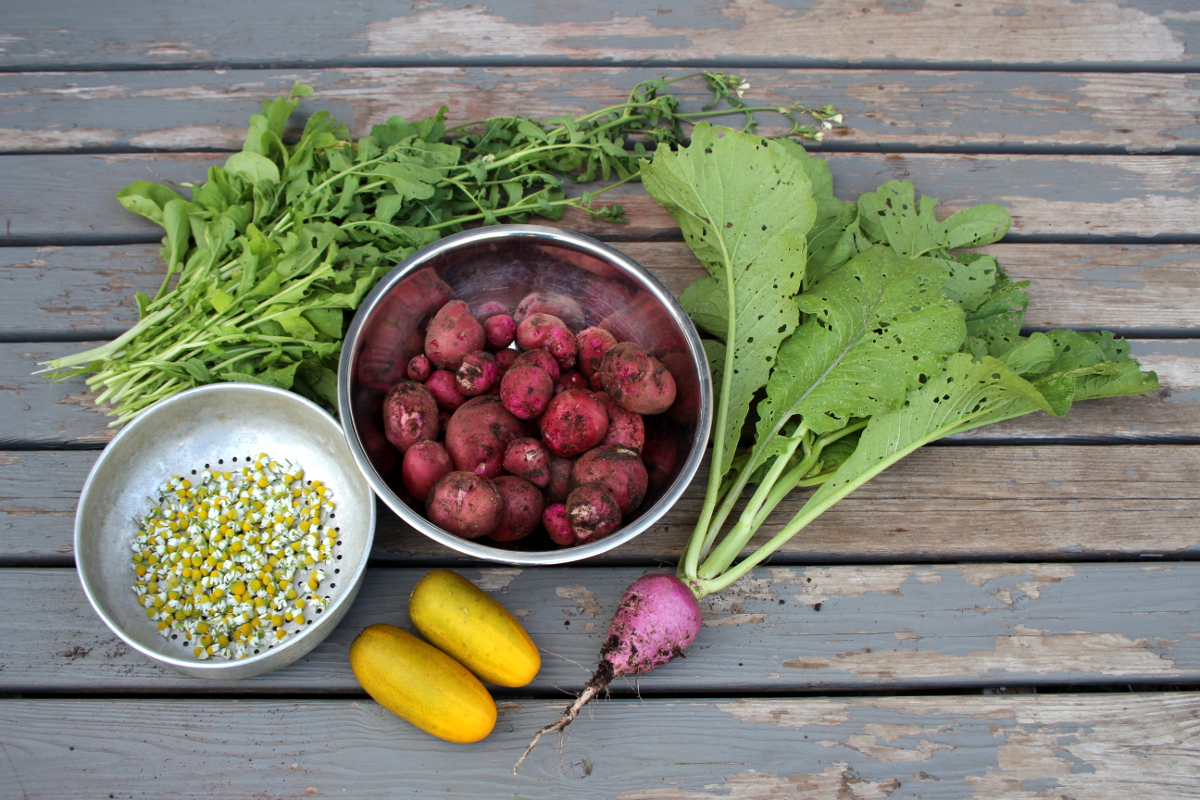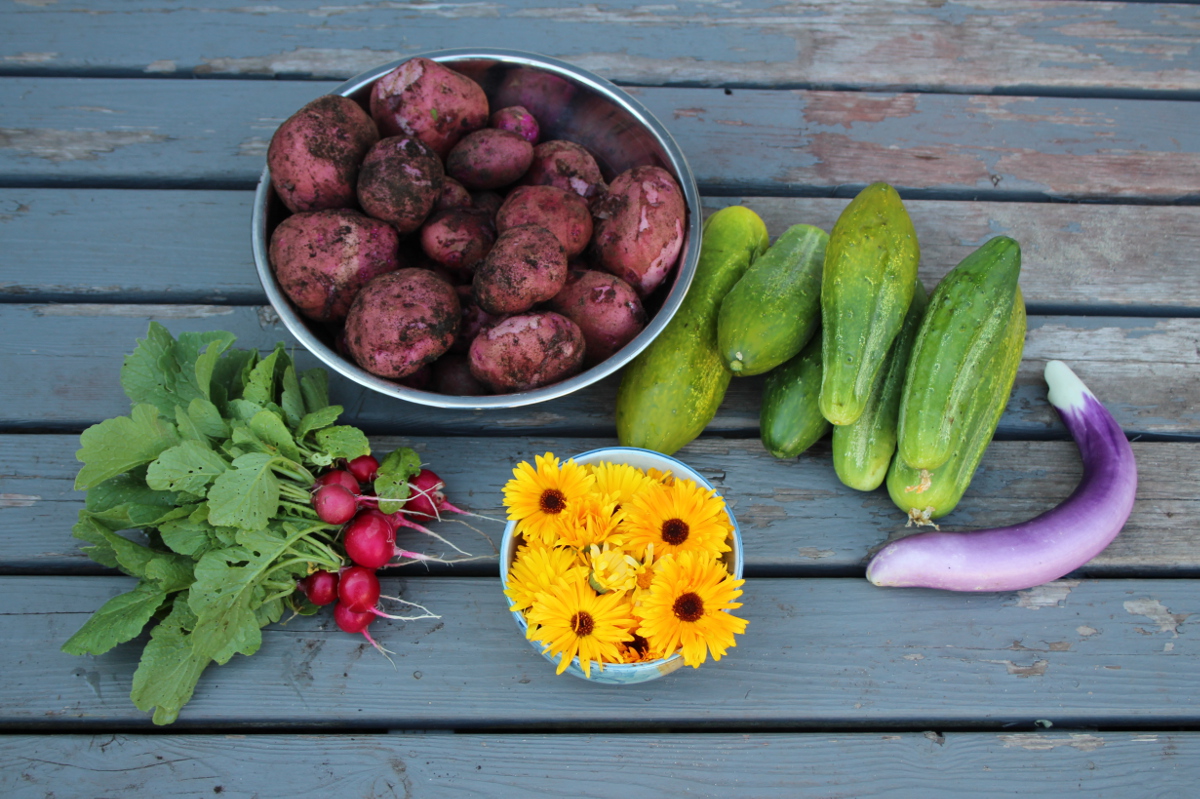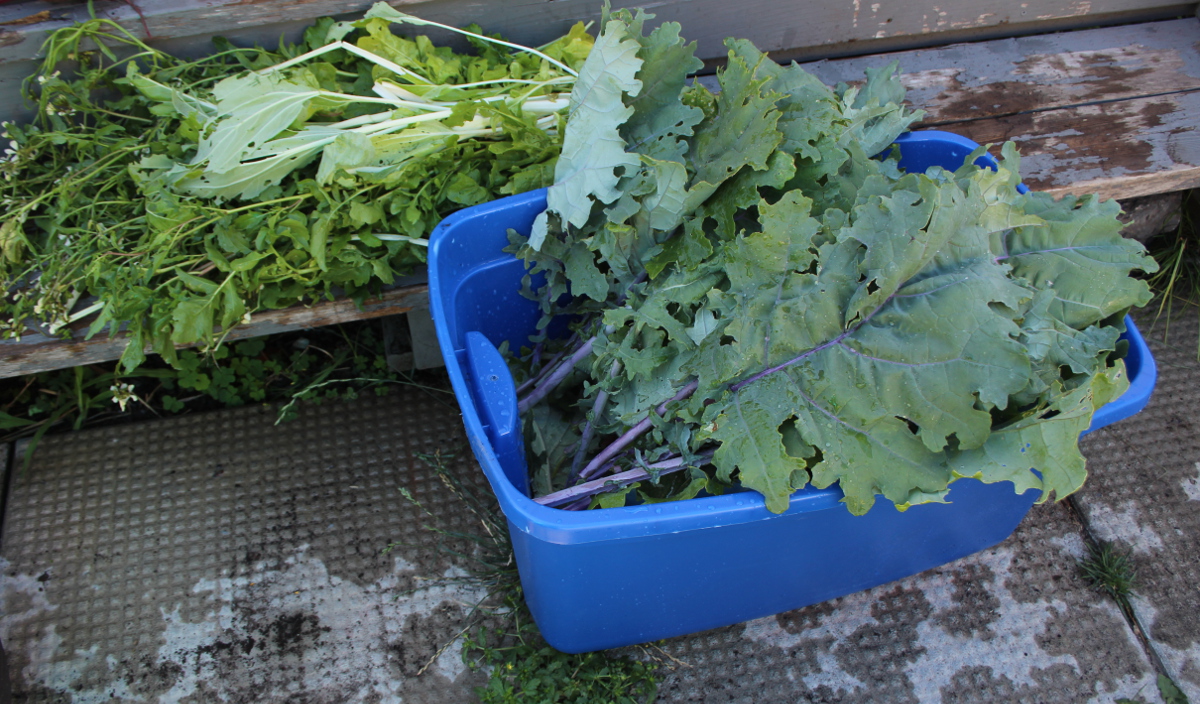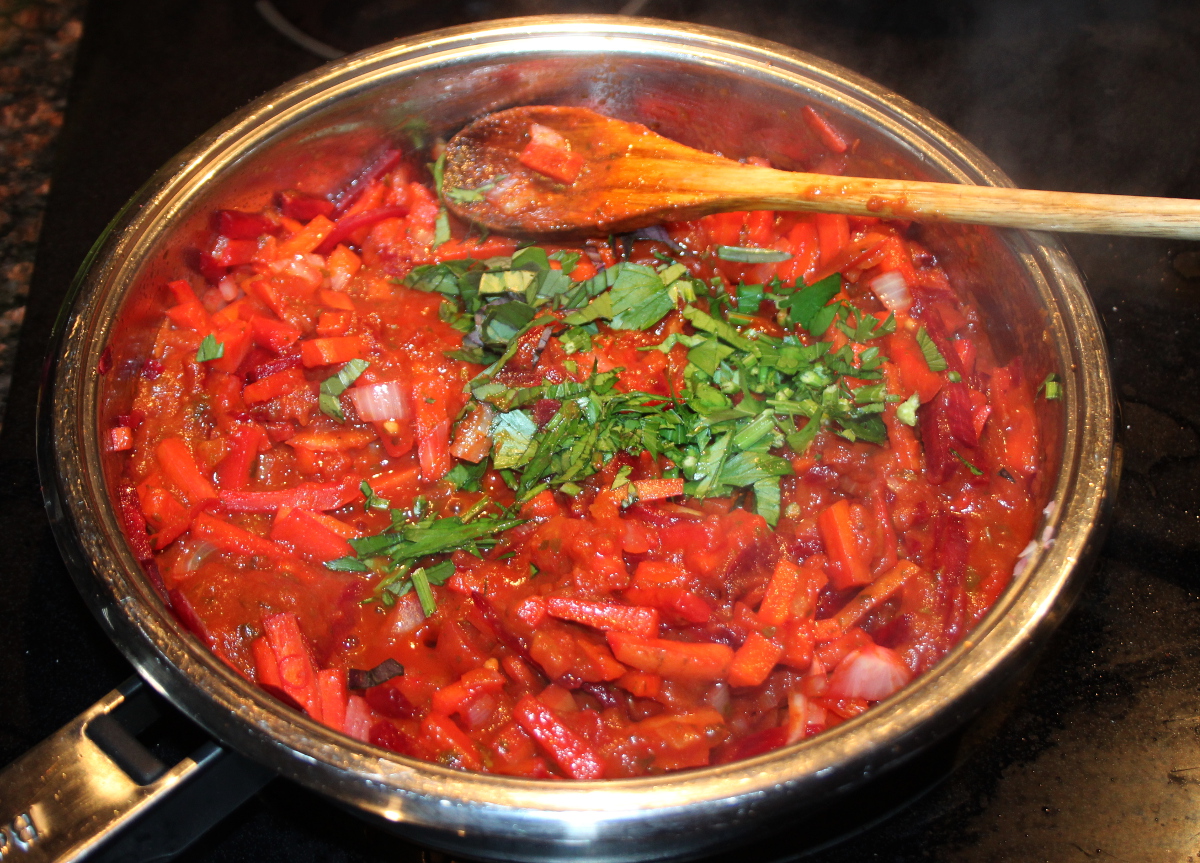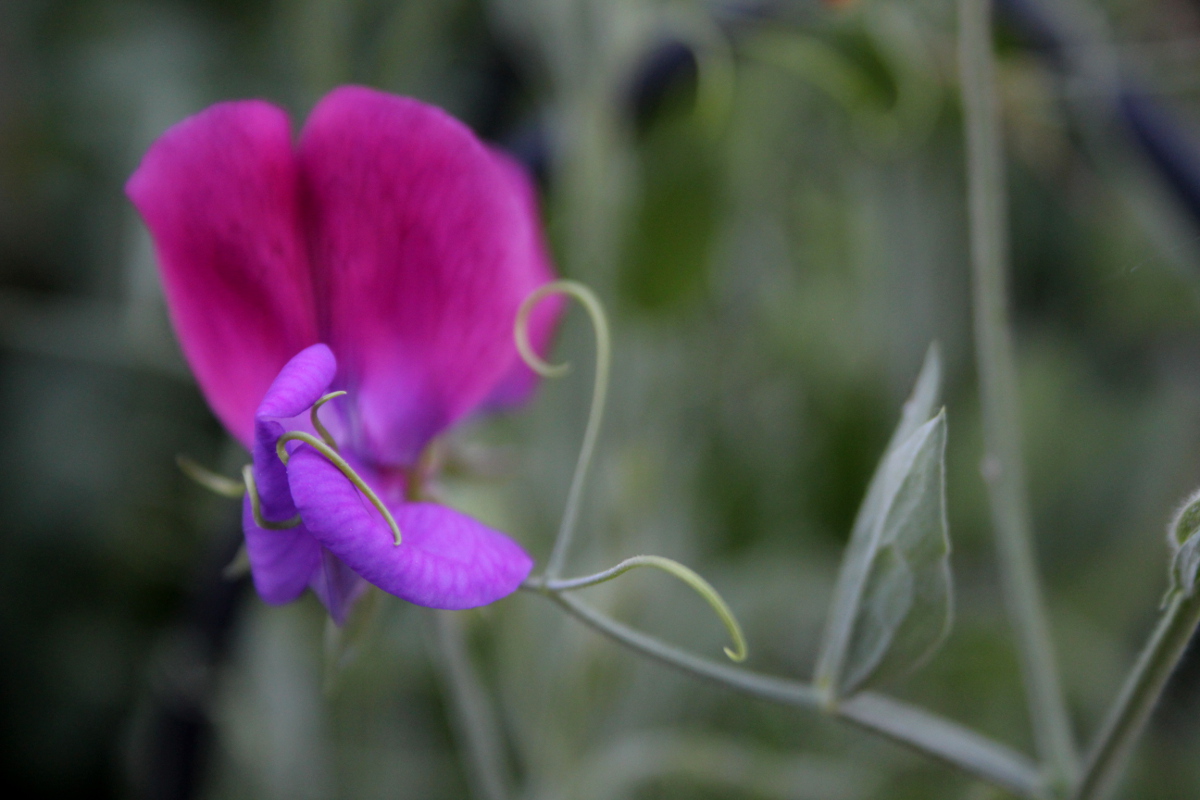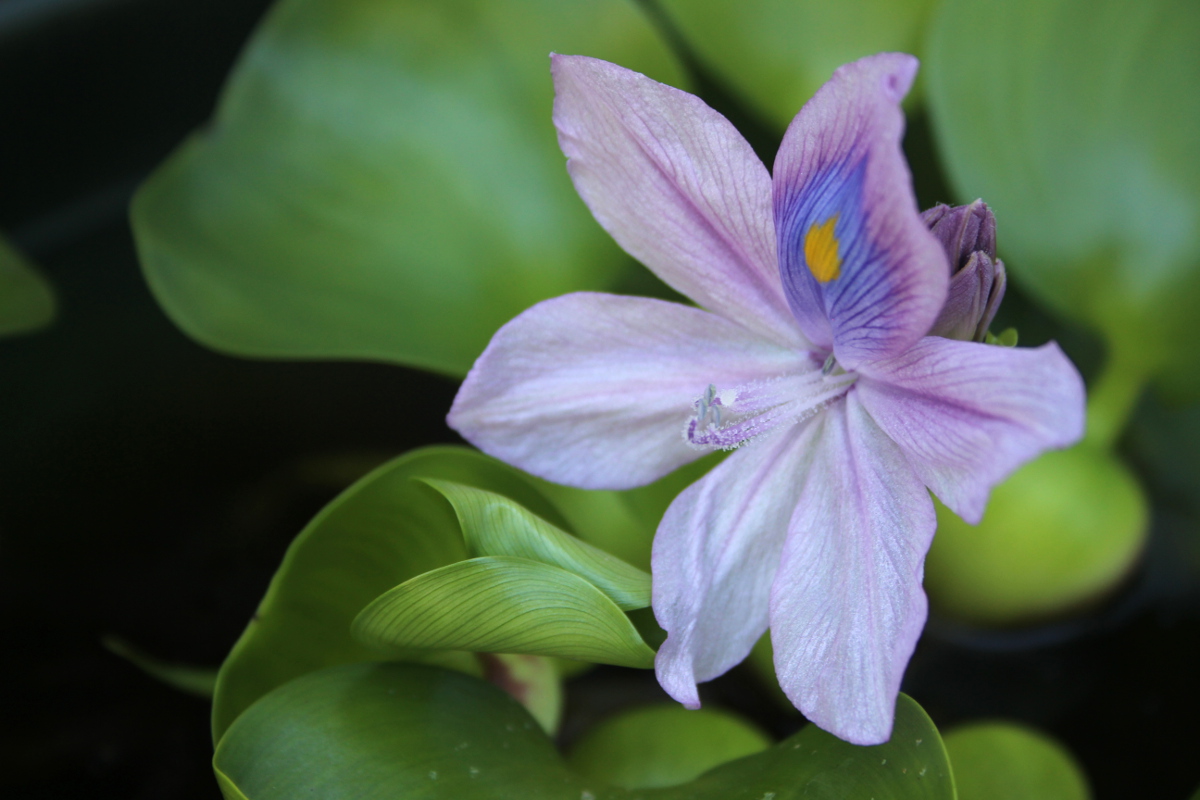With a bountiful garden, comes a need to harvest. It takes planning and time to start plants (especially from seed), harden them off, transplant them into the garden, weed, water, feed the soil, trellis. When things are finally lush and green, we tend to sigh with relief and let the garden grow. Soon however, we need to consider harvesting. After all, that’s the primary reason for growing edibles.
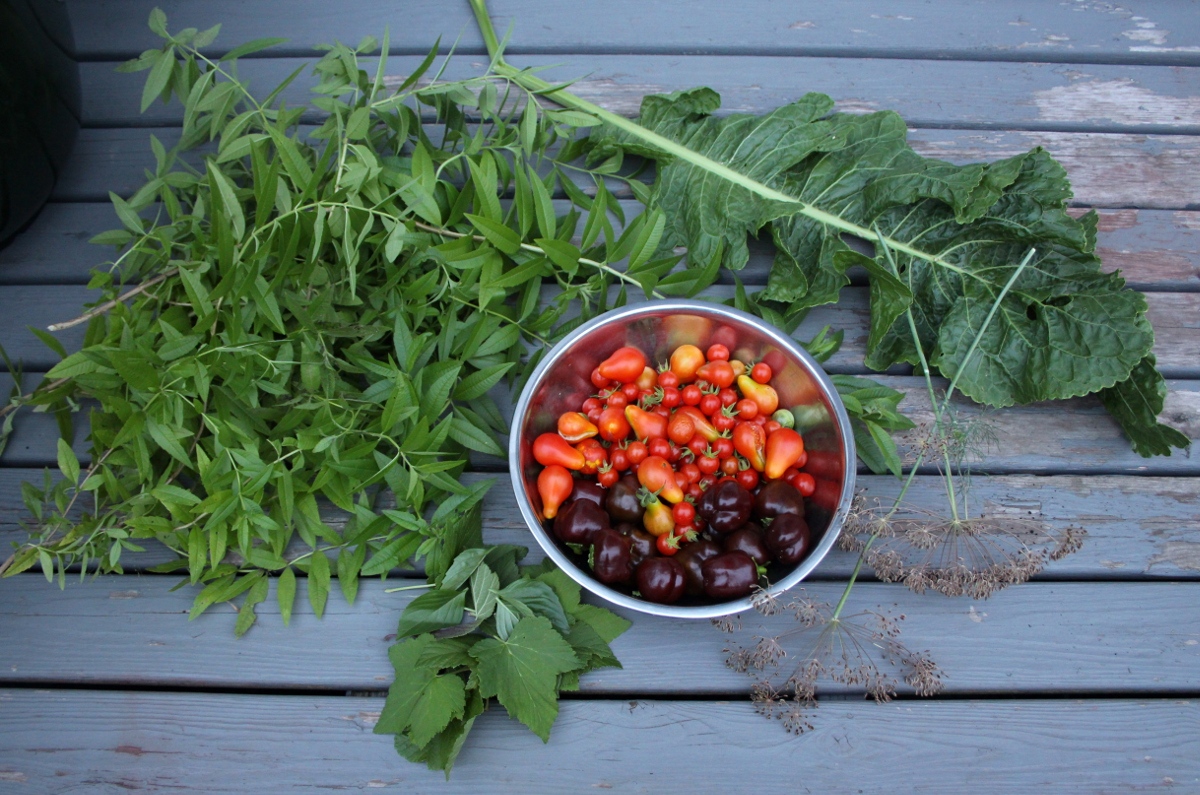
Cherry tomatoes, mini chocolate peppers, lemon verbena, horseradish, dill, and black currant leaves for pickling
With many plants, the more you harvest, the more harvest there will be. Herbs, greens, fruiting plants put out more growth and fruit after harvest. In the earlier years, mots of my harvesting happened at the end of the growing season, often in several grandiose batches that required hours of processing. This year, I’m determined to harvest frequently and in small quantities. It’s much easier to manage, the freshly-picked produce is the most delicious and nutrient-rich, and I’m encouraging plants to produce more.
I’ve been picking chamomile and calendula flowers, greens, potatoes, cucumbers, radishes, and now tomatoes and eggplants are ripening.
The only two large batches I’ve harvested to simplify processing, were the herbs from the spiral (because I let it go without harvesting for a few weeks) and greens (kale, arugula, and Swiss chard).
I wanted lots of basil, parsley, and sage to preserve them in oil for winter and to encourage the plants to put out new growth. Arugula was used in goat cheese pesto with basil and parsley.
Kale I’ve blanched and frozen in ice-cube containers. Swiss chard was separated into stems and leaves, chopped up and frozen. Both of these were easier to do in large batches.
I’m making calendula oil and steeping chamomile tea. I’m putting fresh cucumber slices in kids’ lunches, making low-salt pickles, and throwing together salads with radishes, cucumbers, and greens.
I’ve made beet salad and haddock in beet and carrot marinade.
Harvesting lets me find branches that need tying up, weeds that are craftily hiding in foliage, plants in pots that need relocating to catch more sunlight, irregularities in leaf colour or insect activity. Harvesting gives me more opportunities to connect to the garden, to ground myself, and breathe deeply.
I love hunting for hidden treasures in the vines and plucking green fragrant herb leaves. The kids go outside after supper for a dessert of a few raspberries and black currants. We watch unfolding blooms of water hyacinths, hibiscus, calendula, and lavender, watch the tiny goldfish dart among the water lily leaves, and inhale the aroma of basil and lemon verbena.







